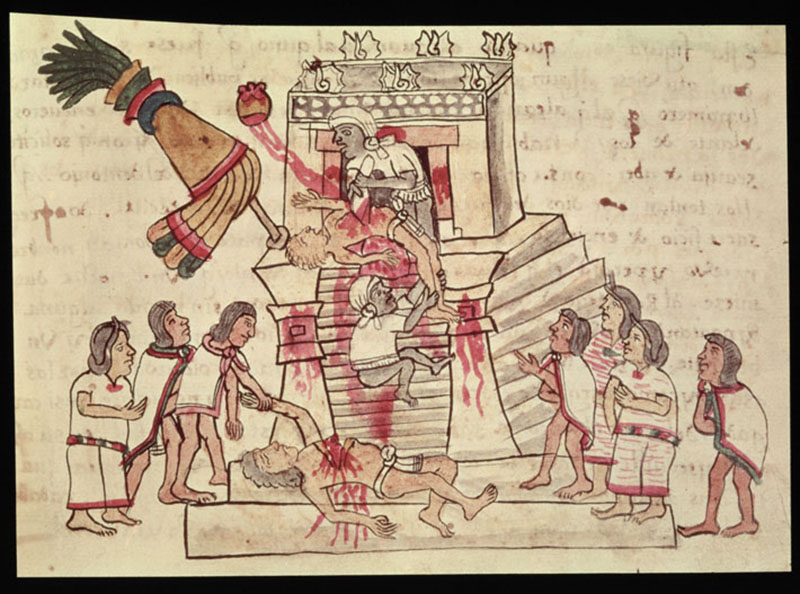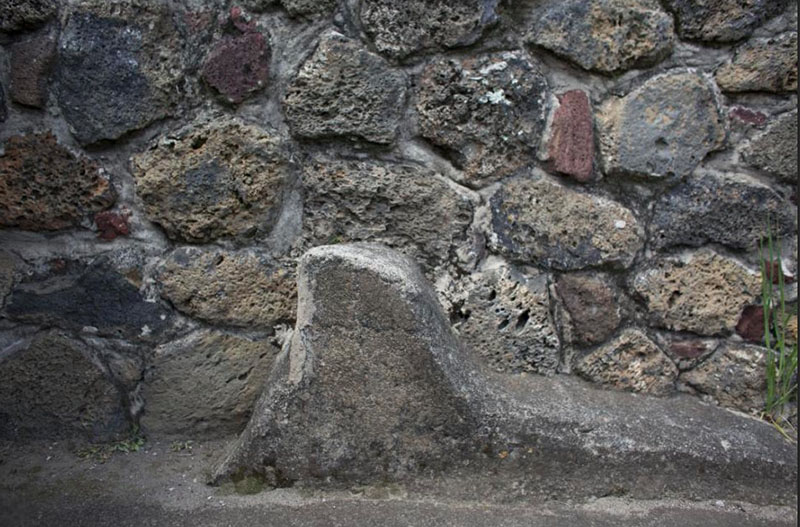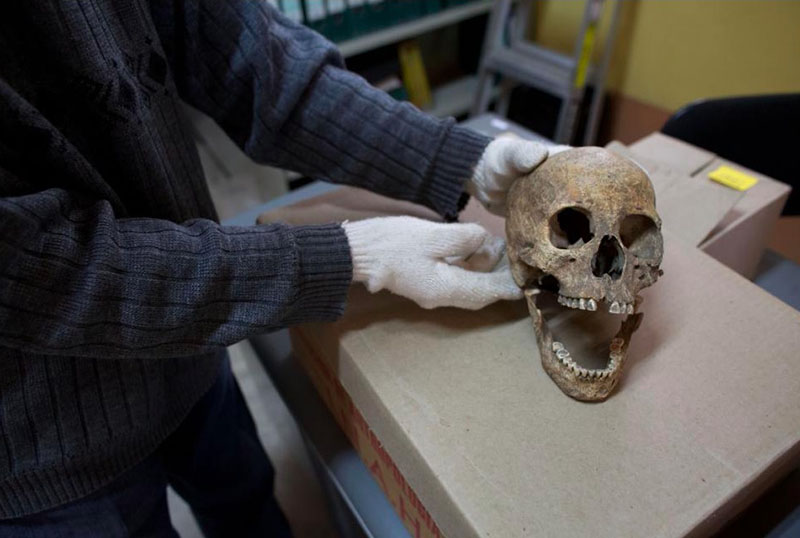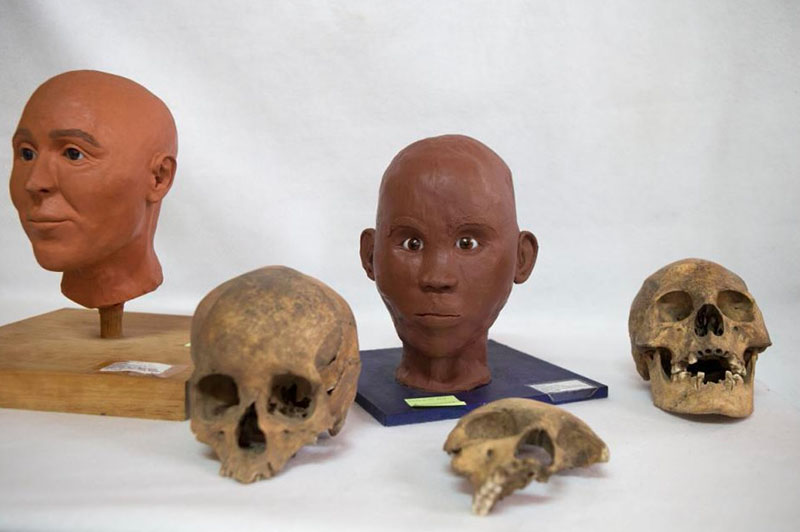Archaeology Dig Reveals Details of Aztec Cannibalism
Excavations at a site just east of Mexico have uncovered the scene of one of the many brutal exchanges between the Aztecs and the Spanish Conquistadors—and has revealed in grisly detail the full extent of Indian cannibalism.

The excavations at the Zultepec-Tecoaque ruins have uncovered the remains of a 1520 Spanish-led supply convoy that consisted of at least 550 people, including 15 Spaniards, their black slaves, and Indian allies of the Spanish. The latter were motivated to join the Spaniards out of a desire for revenge against the Aztecs, who had long preyed on all the surrounding tribes.
The convoy was comprised of people sent from Cuba in a second expedition a year after Cortes' initial landing in 1519 and they were heading to the Aztec capital with supplies. Cortes had been forced to leave the convoy on its own while trying to rescue his troops from an uprising in what is now Mexico City.

The Zultepec-Tecoaque archaeological site in Tlaxcala state, Mexico.
The Spanish caravan was captured and taken to a town inhabited by the Aztec-allied Texcocanos tribe, where they were first ritually murdered and then eaten by their captors.
Members of the captured convoy were held prisoner in doorless cells, where they were fed over six months, in a well-known program used by the Indians to fatten up their victims for a feast.

A faint cross marks a stone inside a cell for prisoners, at the Zultepec-Tecoaque archaeological site in Tlaxcala state, Mexico. Members of a captured convoy of Spanish conquistadors were held prisoner in doorless cells like this one, where they were fed over six months.
One by one, the Indians then sacrificed and ate the men and women. Human and animal bones with cut marks were found in the dig, showing the exact way in which the sacrifices were carried out and how the victims were eaten. The skeletons of the captured Europeans in particular, were torn apart and bore cut marks indicating the meat was removed from the bones.

The skeletons of sacrificed Spaniards are displayed inside a glass case at the museum of the Zultepec-Tecoaque archaeological site in Tlaxcala state, Mexico. The convoy was heading to the Aztec capital with supplies.
Excavations also uncovered carved clay figurines of the Spanish and their allies that the Texcocanos had symbolically decapitated.
When Cortes' soldiers returned to the town, they found that townspeople had strung the severed heads of captured Spaniards on a wooden "skull rack" next to those of their horses, leading some to think the Indians believed that horse and rider were one beast.

The skull of a Spanish woman at the Zultepec-Tecoaque archaeological site in Tlaxcala state, Mexico. According to government archaeologists, this woman was sacrificed in the town plaza, dismembered, and then had the skull of a one-year-old child, who was also sacrificed, placed in her pelvis.
When Cortes learned what happened to his followers, he dispatched a punitive expedition of troops to destroy the town, setting into motion a chain of events that actually helped preserve it.
The inhabitants tried to hide all remains of the Spaniards by tossing them in shallow wells and abandoned the town.
"They heard that he (Cortes) was coming for them, and what they did was hide everything. If they hadn't done that, we wouldn't have found these things," government archaeologist Enrique Martinez told the Associated Press.

A horse's rib marked with cuts, at the Zultepec-Tecoaque archaeological site in Tlaxcala state, Mexico. The Aztecs sacrificed and ate the horses, men, and women who arrived in a convoy of Spanish conquistadors who initially landed in 1519.
Cortes succeeded in conquering the Aztecs the following year, not with “guns, germs, and steel” as Jewish propagandists such as Jared Diamond have claimed, but actually because they had the active assistance of tens of thousands of infuriated Indian allies who wanted to be rid of the Aztecs.
The Indian allies were, however, as cannibalistic as the Aztecs, and it was only their common alliance with Cortes which prevented them from eating the Spaniards as well.
At least one woman was sacrificed in the town plaza, dismembered, and then had the skull of a one-year-old child, who was also sacrificed, placed in her pelvis, for reasons that were probably symbolic.
While Spaniards later wrote accounts of the massacre that occurred in 1520, a dark year for the conquistadors, archaeologists are finding things they didn't mention.
"The interesting part is that the historical sources (mainly Spanish chroniclers) didn't mention the presence of women in the convoy, and here we have a large presence of women among remains excavated so far,” Martinez said.
The Spaniards' goods were, on the whole, treated indifferently. A prized and elaborate majolica plate from Europe was tossed into the wells as were the Spaniards' jewelry and their spurs and stirrups, which were of no use to the Indians. A horse's rib bone, however, was prized and carved into a musical instrument.
The bloodiness of the encounter is reflected in the second name of the Zultepec ruin site, Tecoaque, which means "the place where they ate them" in Nahuatl, the Aztec language.
Cortes went on to conquer the Aztec capital in 1521.
* The archaeologists were, significantly, able to detect both the ethnicity and gender of those in the convoy from the recovered skulls—proving yet again that race is a biological reality.

The skull of a Spaniard, bottom left; a child, center; and an African slave alongside models of what a Spanish conquistador and a person of mixed Amerindian and African descent may have looked like, at the Zultepec-Tecoaque archaeological site in Tlaxcala state, Mexico.
Share this post
Ancient Tulum: Mayan Capital of High Technology and Ancient White Leadership
re-Spanish Mexico’s ...





